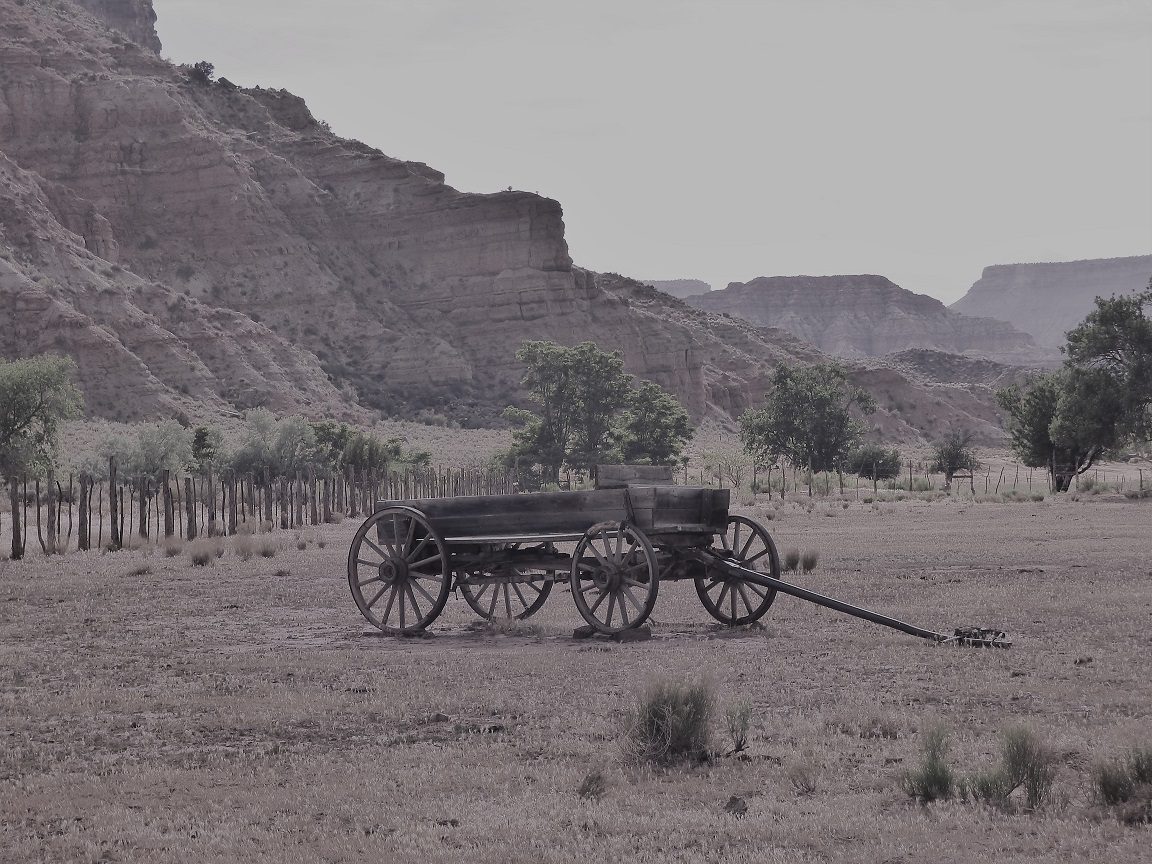
I began exploring online to see what places in Utah might be doable and early in my quest came across this wonderfully informative website about ghost towns in the United States and Canada. I used it to narrow down a reasonable selection of places to visit that would have a route we could drive over a weekend.
A Jogger Stroller for Rough Terrain
Not knowing exactly what to expect, we opted to take Jamie’s large jogger stroller as it does a great job getting around on difficult terrain. I have included a couple of photos of it below so you know what we used:
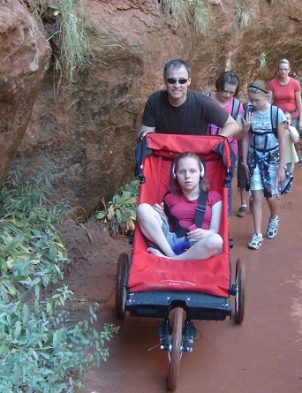
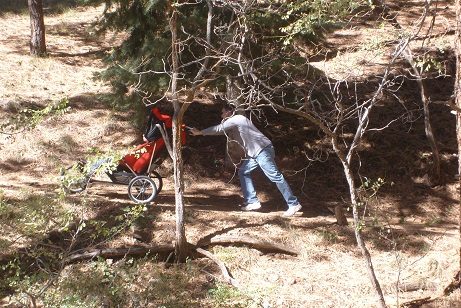
The one where I am pushing her up a slight hill was taken on a path at the North Rim of the Grand Canyon. I can say that if a trail is wide enough and the surface is reasonably smooth and not too steep, I can use this stroller to explore it with Jamie. I only mention this, because with the jogger stroller, we were able to walk around all the places I will show in this post, but I am still going to sum up what realistically is doable with a wheelchair and what you should consider if you want to try a ghost town trip in your own state or province.
Ghost Towns Visited
Utah has MANY ghost towns and as I mentioned we wanted to do this in three days, so we selected ones that would minimize our driving (while still including Grafton – I REALLY wanted to go there 🙂 ). A map of our route down through the ghost towns and back home along the interstate and through Salt Lake City follows:
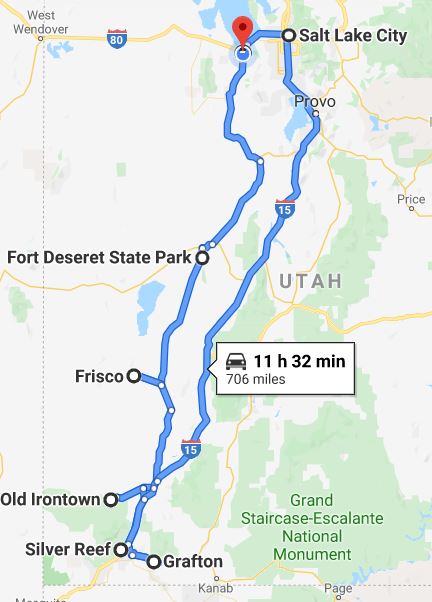
For the sake of talking about ghost towns and wheelchair access, I will break them down into three categories. The first – and largest – I will call “the perishing”. While there might be historical markers set up by local governments to provide some scant information, the sites themselves are largely left alone. They may be in disrepair or even vandalized and little, if any, facilities or improvements have been made to improve accessibility. Of the places we visited, Fort Deseret State Park and Frisco would fit into that category.
On the other hand, I would slot Old Irontown, Silver Reef, and Grafton into my next category – “the preserved”. Local governments, foundations or other organizations have taken an interest in them and an effort is expended to maintain and even improve them. They will be in decent condition, offering much better accessibility than “the perishing” sites do. Admission to such locations is nominal or free because the motivation behind maintaining them is altruistic – groups simply want the public to be educated about the sites and to care for them.
A third type of ghost town category exists that I will call “the promoted”. These are sites where companies or organizations have expertly restored a town or site with some kind of self-interested motive behind it. We did not visit any sites like this on our trip, but I will mention a word or two about them later in this post. For now, just know that they are the most accessible for wheelchair travel.
Now, on to the details of each ghost town category.
The Perishing
Just a few miles south of Delta Utah, lies Fort Deseret State Park. Built of adobe mud and straw in the middle of the 19th century, the fort was used as a defense against native Americans in the area. Now, over 150 years later, the crumbling outer wall is all that remains. There is not much more than this to see and the desert flora has sprung up all over the middle of the fort – it is not like your will be wheeling around much on all that uneven ground. Here are a couple of photos to give you some idea of what the terrain is like:
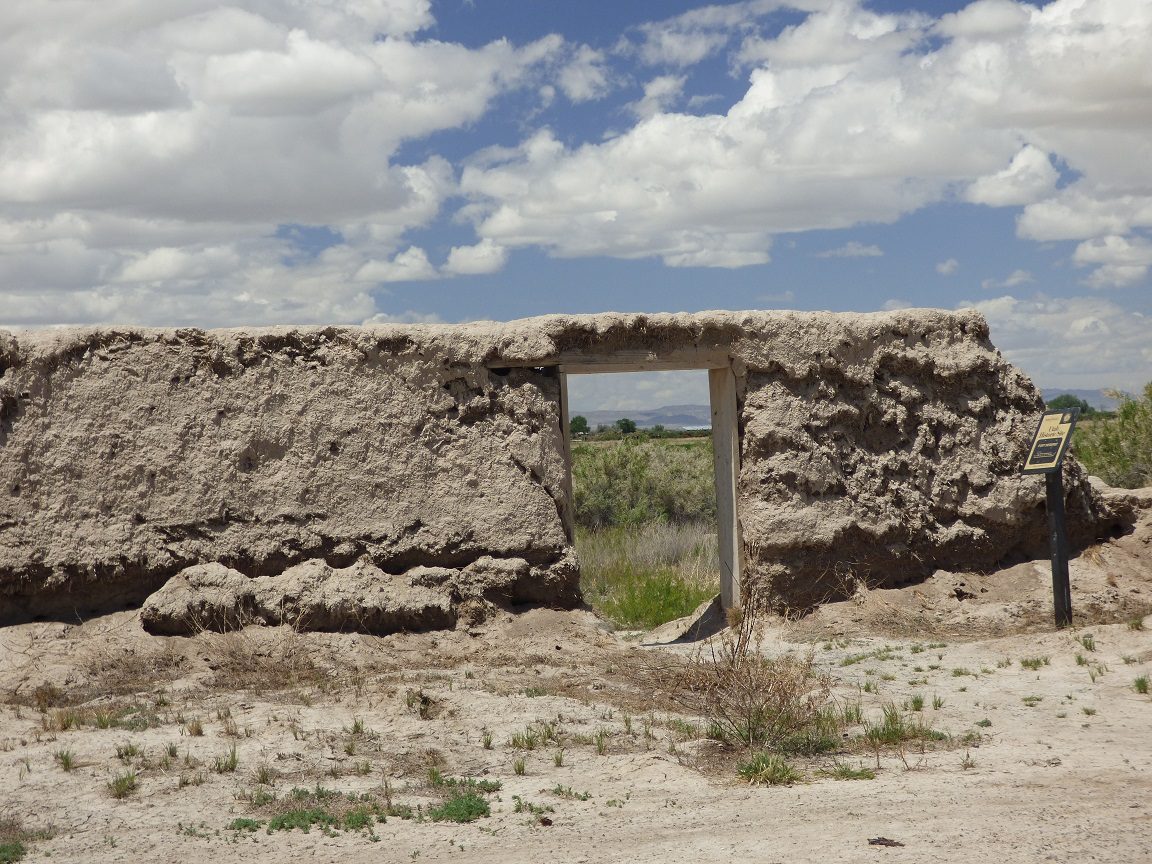
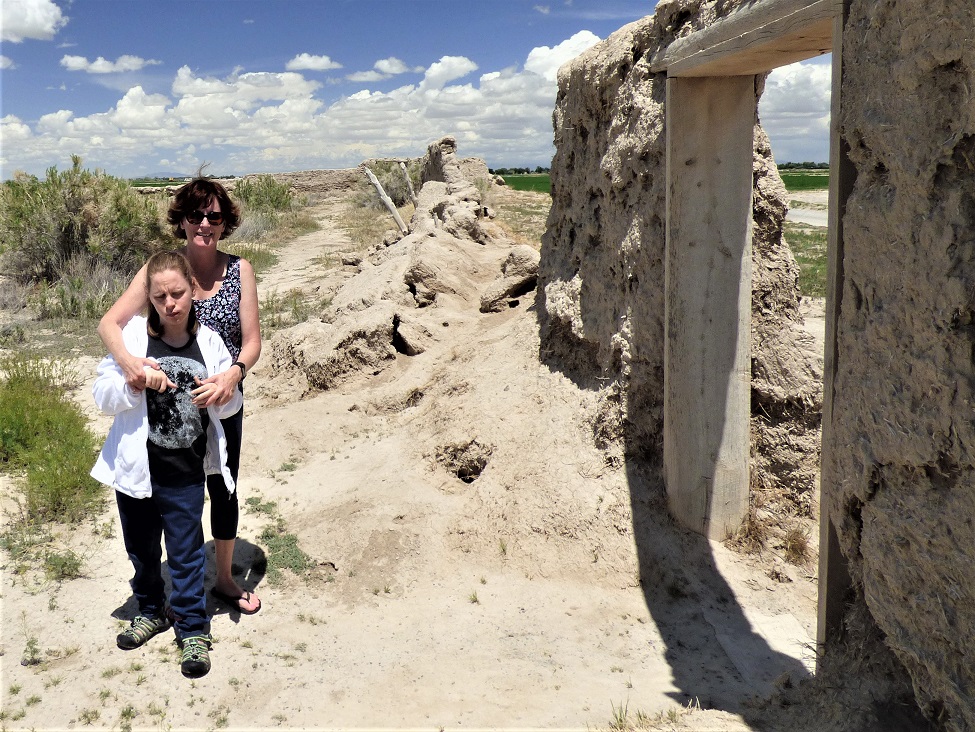
You can see we did get Jamie out and got her to stretch her legs a little, but the place where I took the photo of her and Leslie is about as far as we went. There was a picnic table or two in the area under a shade tree, so we had our lunch here before taking off to the next “perishing” ghost town – Frisco.
A dirt road leads up to the remote area that was once Frisco and it is hard to believe that this town once hosted a population of around 4,000. There are no facilities and no improvements whatsoever and below is a satellite view of part of the area to give you some idea of what the terrain is like:
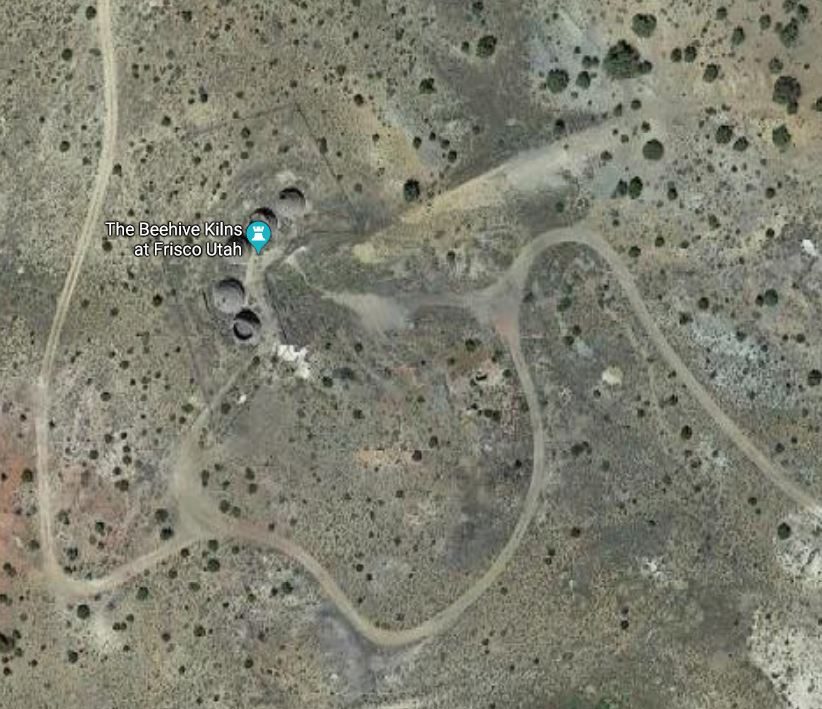
You can see that there are some decent dirt roads you can drive around on – and some might allow you to wheel a chair around as you can see from these ground level photos:
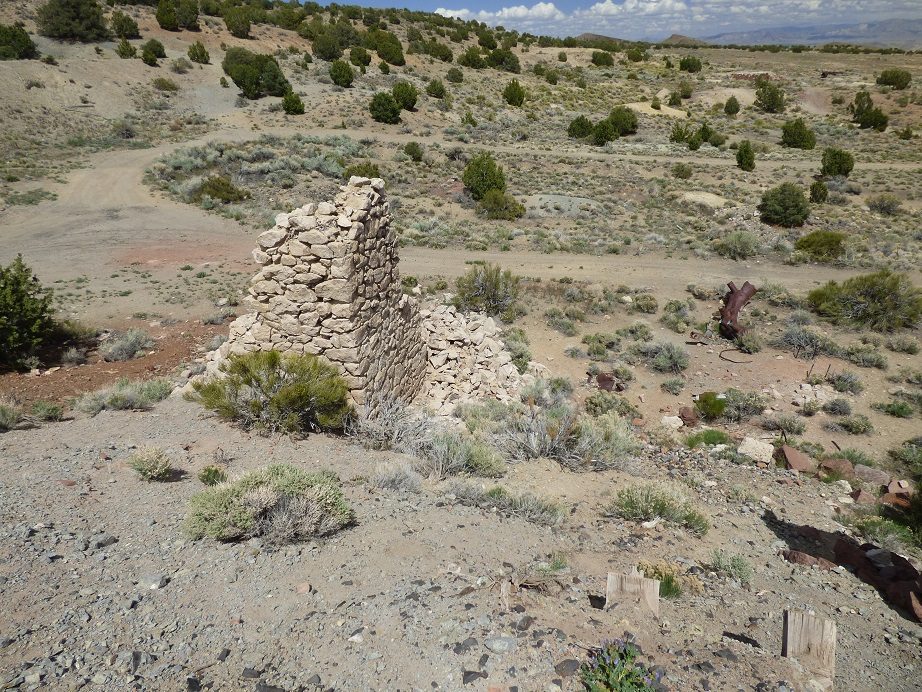
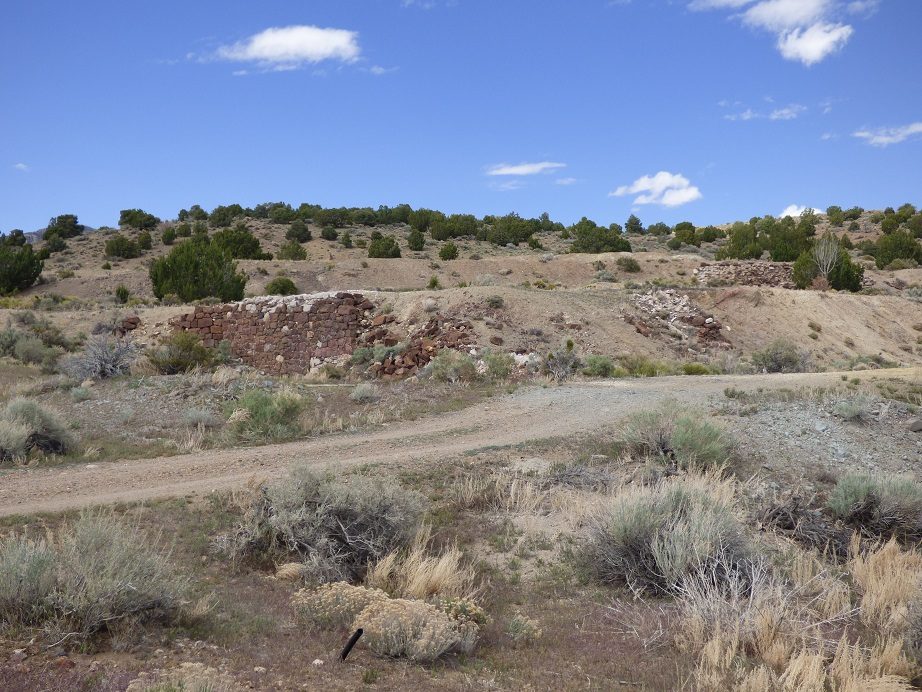
The challenge and disappointment is that you cannot get really close to anything. Sure, you can see things from a distance, but unless you have a wheelchair more equipped to rough terrain, or maybe a jogger stroller, you have to settle for a view like this…
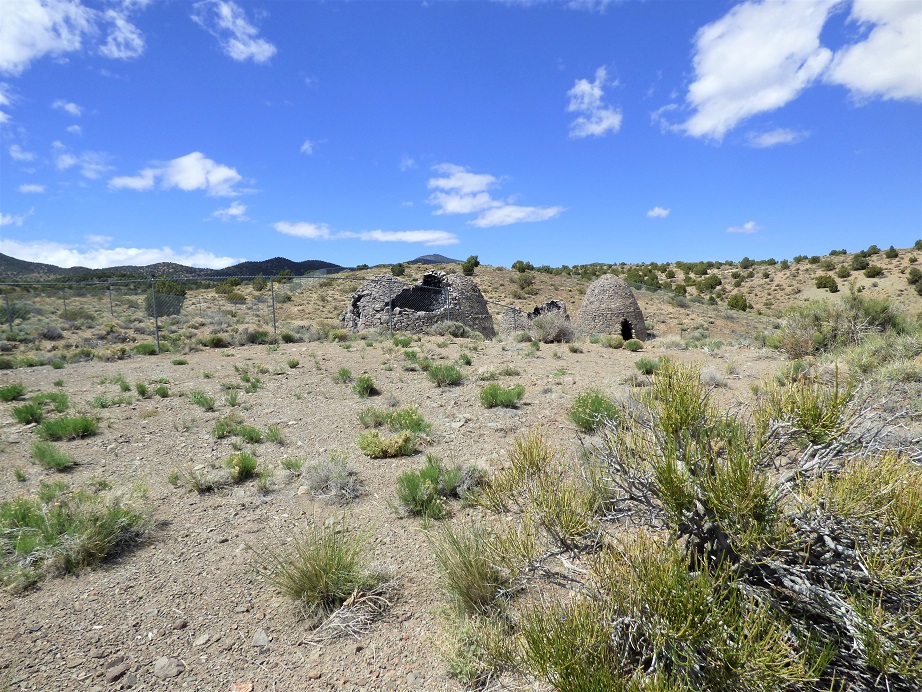
…instead of this:
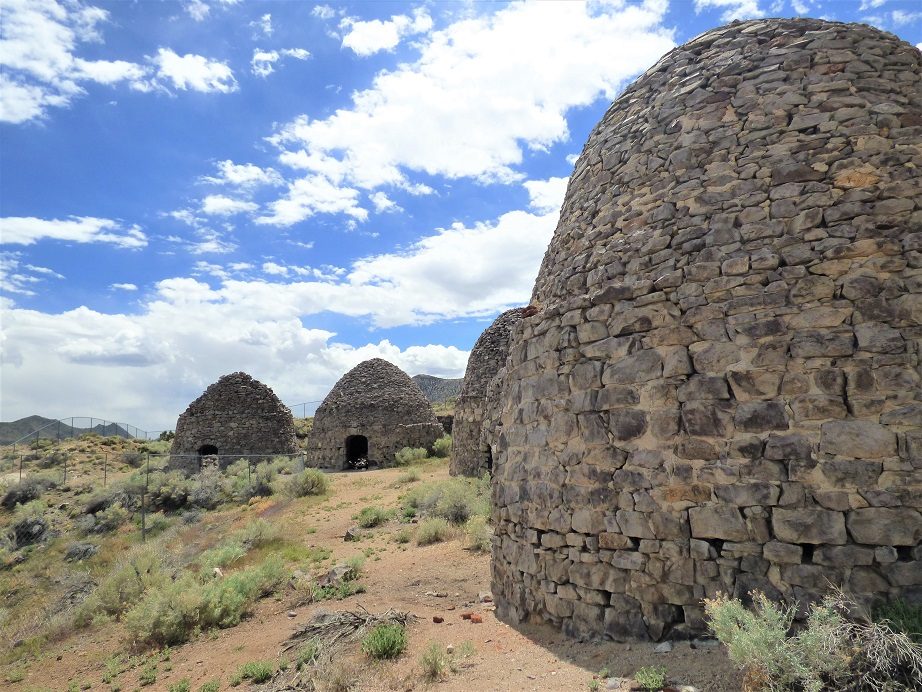
Frisco also had a cemetery that was pretty cool, but again, since this area is not maintained in anyway, you will probably have to settle for seeing the entrance to it and the headstones from a distance instead of getting up close to them:
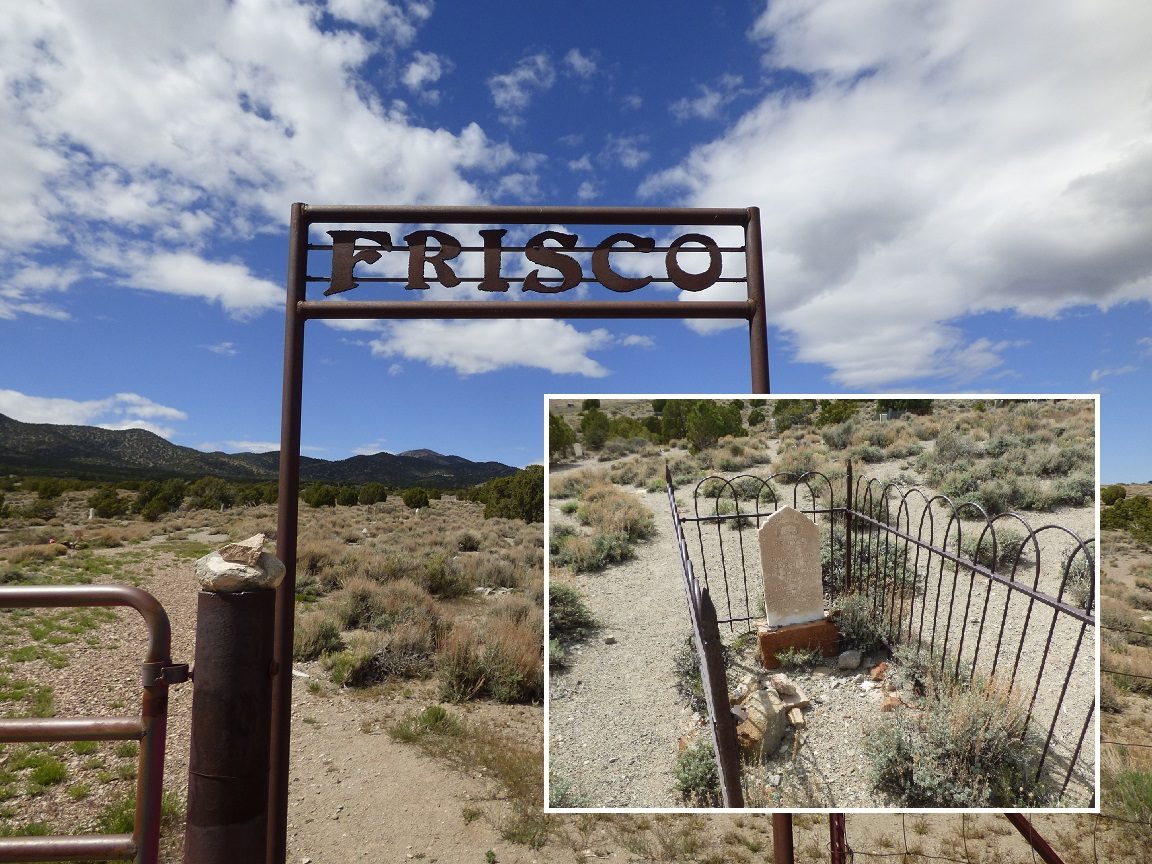
Bottom line – the ghost towns that do not have some kind of financial support behind them, probably are not good candidates for a visit from a wheelchair traveler.
The Preserved
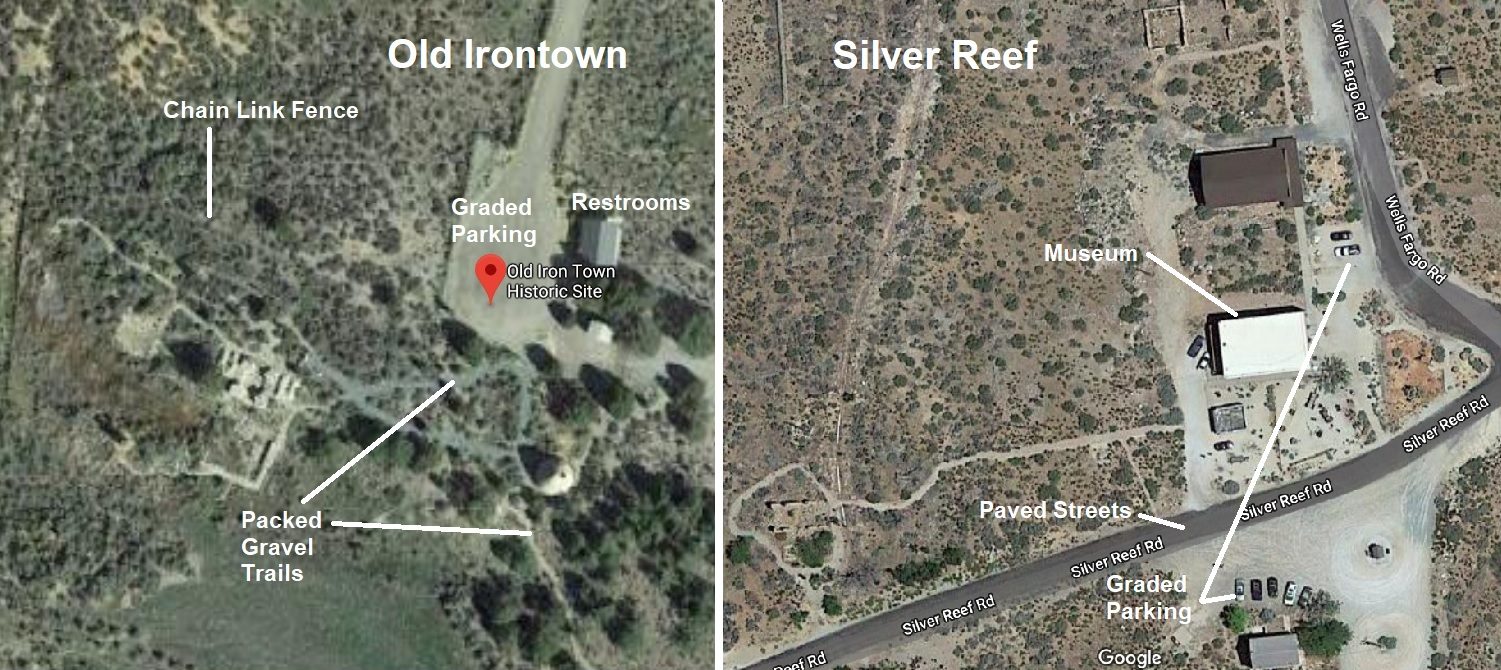
Being in a more remote area, Old Irontown is fenced and locked up at nights. While neither the parking nor trails were paved, they were improved. The parking lot was leveled and smooth and the walking trails were packed dirt or gravel, such that a wheelchair could make its way around to most areas. One of the two beehive kilns used to create charcoal to process the iron is in great shape, as you can see from the photos below, but mostly only crumbling stone remains of the rest of the buildings:
As we entered Silver Reef, we were greeted by a small museum housed in the town’s historic Wells Fargo Express Office building constructed in 1877. For a small charge you can walk through it and view the artifacts it has. There is no elevator, but you can go to the lower level walking outside on the sidewalk and there they have a replica of a mine shaft they were able to create from a grant awarded them. It is a little cramped, but you can wheel your chair through it.
Some buildings have been fully reconstructed where the originals once stood and they even have the original jail used in the 19th century, but most of the buildings are the crumbling remains one would expect to see in a ghost town. The museum and one of those crumbling buildings are shown below:
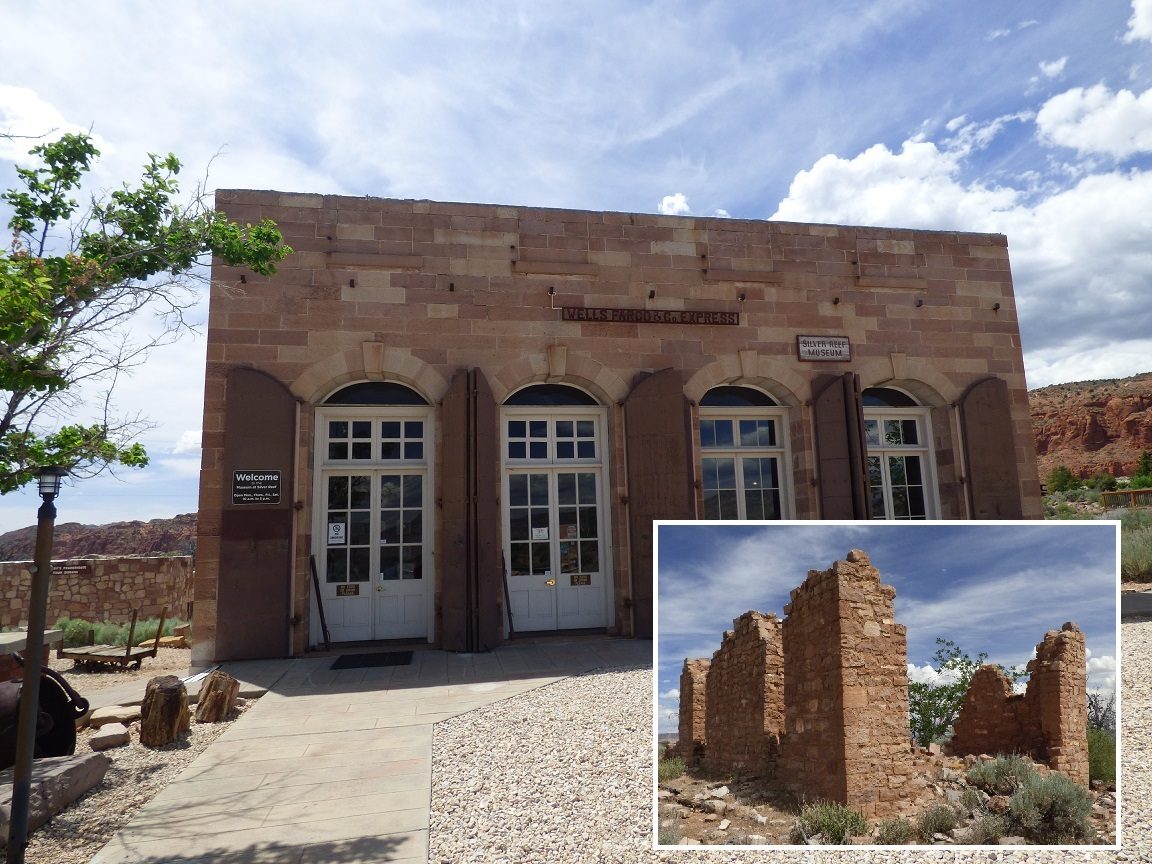
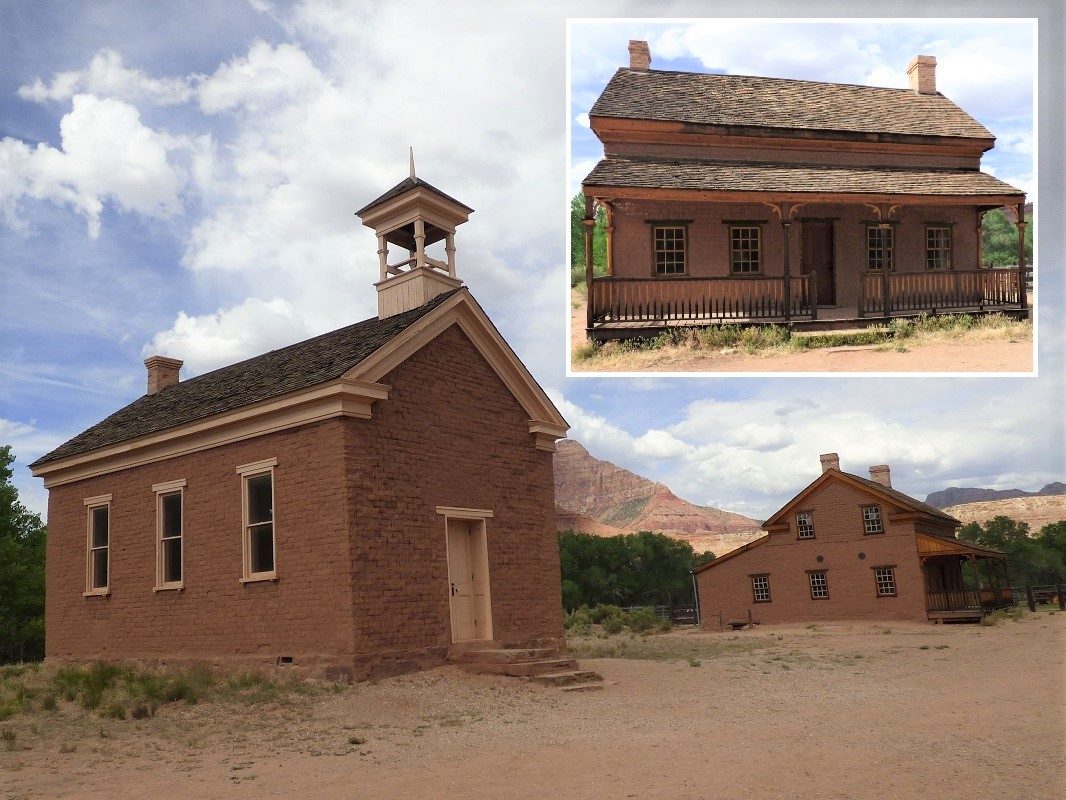
To enter this area, there is an opening in a fence that will be a bit tight, but doable for a wheelchair. Once in, you can see that the grounds are packed dirt and quite smooth. Grafton has only a few buildings and some of them are behind fences but there is one that is level with the ground you can walk through. The cemetery is also accessible. Here are a few more photos of these places:
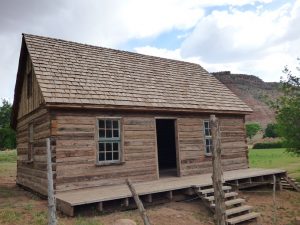
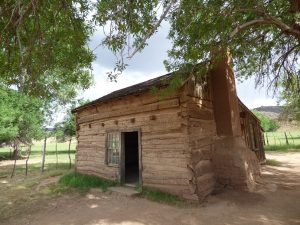
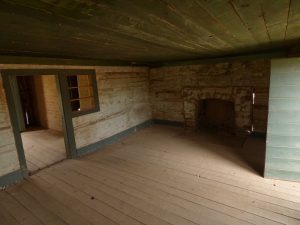
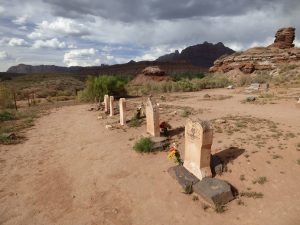
Bottom line – ghost towns that have a foundation or organization that provides some financial support will be ones that can be visited successfully in a wheelchair. They will most likely be quieter places where you can wander and wonder what life would have been like when these places flourished.
The Promoted

Although we did not go to a “Promoted” ghost town on this trip, I thought a little bit of discussion about this category of sites should be included. If you want to experience the “old west”, these places offer the best access and entertainment to boot. I mentioned Calico Ghost Town at the onset of this post – you can get around most of it quite easily in a wheelchair and there are some fun gift shops to see.
While Tombstone, Arizona, never was a place that became a ghost town, its population did dip when the mines became unprofitable . The community has embraced its mining and cowboy heritage and promotes itself as such.
Unlike some of the other promoted ghost towns, Tombstone is not entirely owned by one entity, but is rather its own community. As such, the activities to do, the dining establishments, and the places to see carry their own admission. They cater to the tourists – even those in wheelchairs – since their livelihood is tied up in that industry.
What fun it was to have great seats to see the reenactment of the gunfight at the OK Corral!
Not all promoted ghost town visits come with financial price tags. Some organizations do beautiful restorations and seeing them does not come with an admission cost in dollars. A little closer to home was an abandoned fort, called Cove Fort, that was donated to the Mormon Church in the late 20th century. With their deep pockets, they did not hold back in doing the necessary repairs and making it into a great place to see.
Cove Fort was promoted with billboards along the interstate and we finally did make a stop to it when we did the Grand Canyon trip some years ago. Since we only had our jogger stroller with us, the Church had a wheelchair they loaned us while there. The place was restored in such a way that wheelchairs could go through the buildings there as you can see from the pictures below:
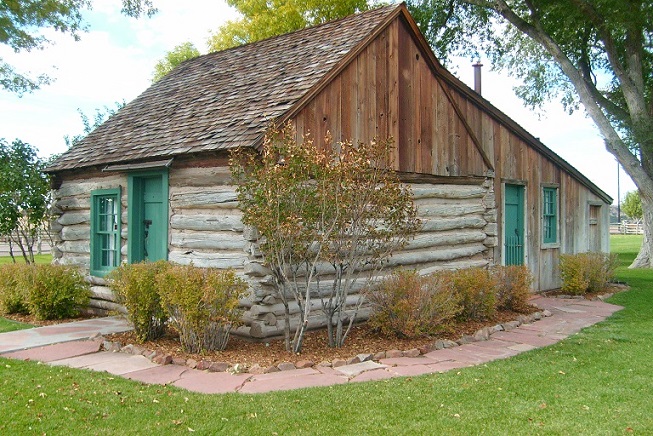
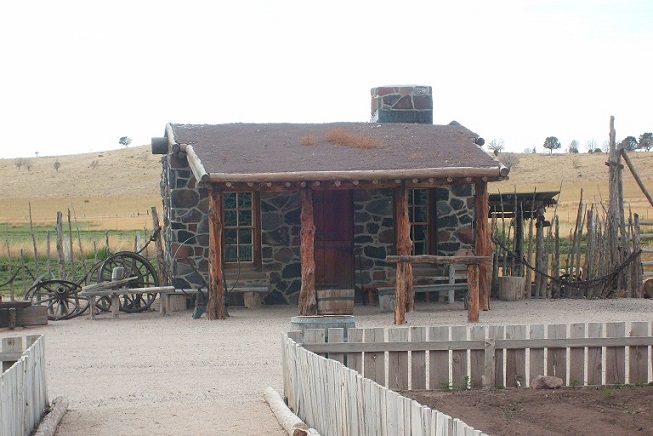
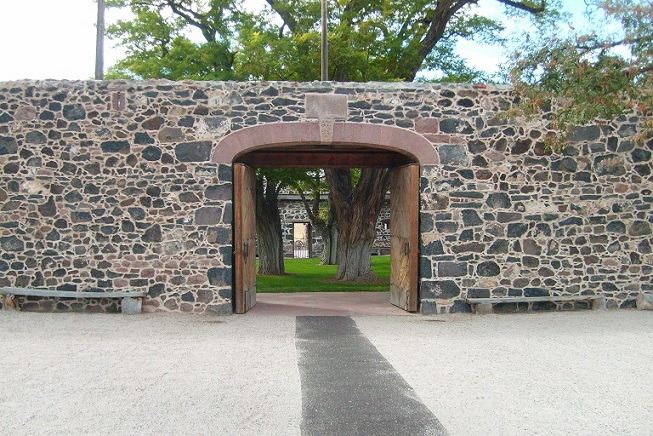
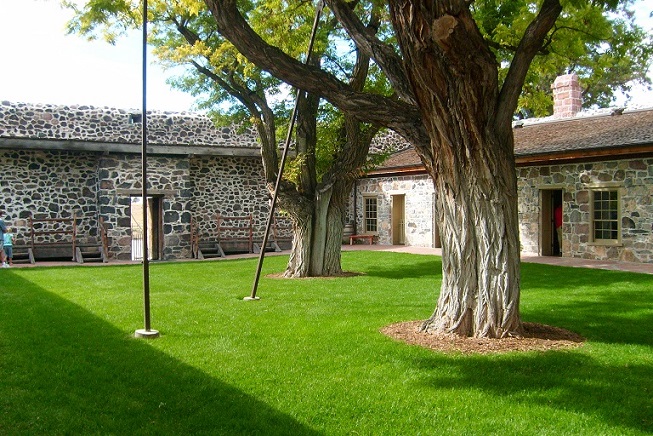
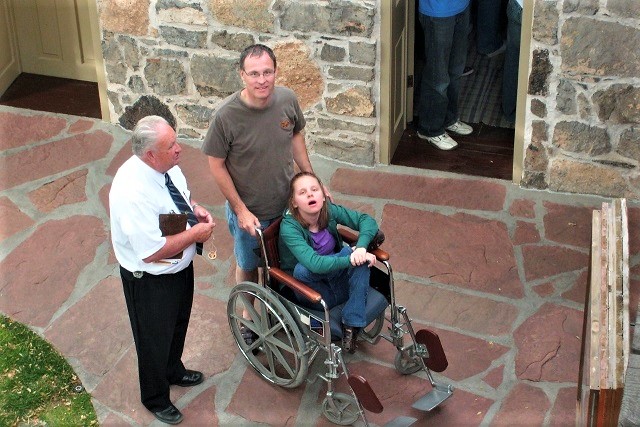
If there was any sort of admission price for Cove Fort, it was simply having to hear the spiel given by an older missionary for the Church. But he was polite and shared some interesting history about the site.
Bottom line – you will probably have a great time seeing promoted ghost towns as they offer a lot.
Conclusions
So, to sum it all up, you will probably want to forego visits to ghost towns that are perishing, unless you have something durable to get around in other than a normal wheelchair.
The preserved and promoted ghost towns will offer the best experience for wheelchair travelers with the latter offering a more touristy experience with gift shops and entertaining shows or tours.
Happy Travels!
